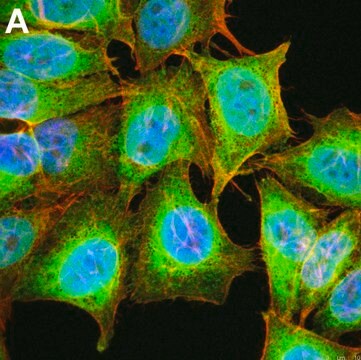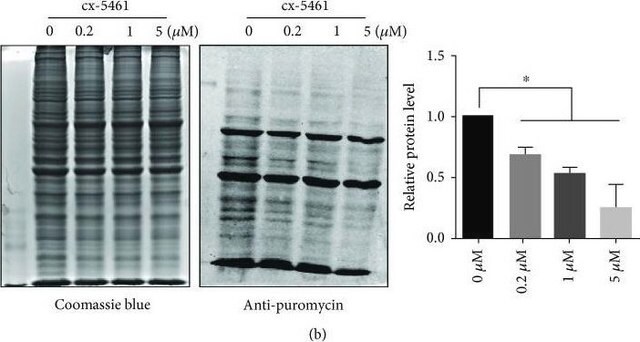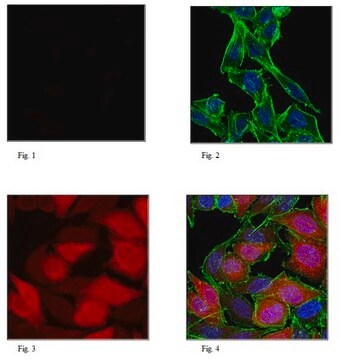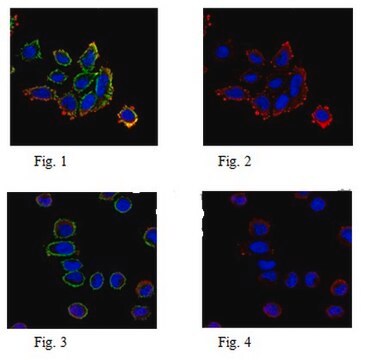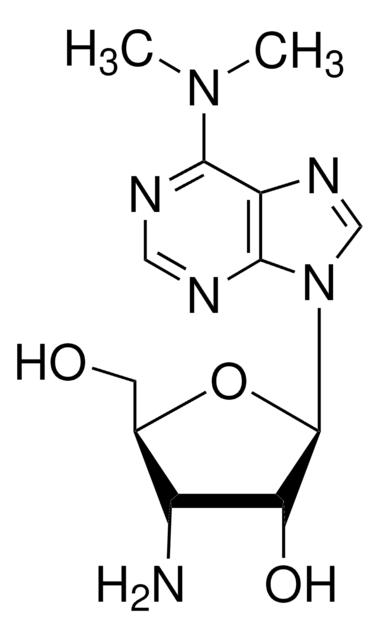MABE343
Anti-Puromycin Antibody, clone 12D10
clone 12D10, from mouse
Synonym(s):
Anti-Puromycin, Clone 12D10 Anti-Puromycin, Puromycin Detection Antibody
About This Item
Recommended Products
biological source
mouse
Quality Level
antibody form
purified immunoglobulin
antibody product type
primary antibodies
clone
12D10, monoclonal
species reactivity
human
species reactivity (predicted by homology)
all
technique(s)
flow cytometry: suitable
immunocytochemistry: suitable
immunofluorescence: suitable
immunohistochemistry: suitable
immunoprecipitation (IP): suitable
western blot: suitable
isotype
IgG2aκ
shipped in
wet ice
target post-translational modification
unmodified
Gene Information
human ... NPEPPS(9520)
General description
Specificity
Immunogen
Application
Epigenetics & Nuclear Function
RNA Metabolism & Binding Proteins
Immunocytochemistry Analysis: A 1:10,000 dilution from a representative lot detected Puromycin-incorporated neosynthesized proteins in HeLa cells treated with Puromycin.
Western Blotting Analysis: A representative lot detected Puromycin-incorporated neosynthesized proteins in WB (Reineke, L. C., et al. (2012). Mol Biol Cell. 23(18):3499-3510.; Trinh, M. A. et al. (2012). Cell Rep. 1(6):678-688.; Fortin, D. A., et al. (2012). J Neurosci. 32(24):8127-8137.; Clavarino, G., et al. (2012). PLoS Pathog. 8(5):e1002708.; David, A., et al. (2012). J Cell Biol. 197(1):45-57.; White, L. K., et al. (2011). J Virol. 85(1):606-620.; Hoeffer, C. A., et al. (2011). Proc Natl Acad Sci USA. 108(8):3383-3388.; Goodman, C. A., et al. (2010). FASEB J. 25(3):1028-1039.; Schmidt, E., K., et al. (2009). Nat Methods. 6(4):275-277.; Santini, E., et al. (2013). Nature. 493(7432):411-415.; Quy. P. N., et al. (2013). J Biol Chem. 288(2):1125-1134.; Hulmi. J. J., et al. (2012). Am J Physiol Endocrinol Metab. 304(1):E41-50.; Bhattacharya, A., et al. (2012). Neuron. 76(2):325-337.; Hoeffer, C. A., et al. (2013). J Neurophysiol. 109(1):68-76.).
Immunofluorescence Analysis: A representative lot detected Puromycin-incorporated neosynthesized proteins in WB (Reineke, L. C., et al. (2012). Mol Biol Cell. 23(18):3499-3510.; Trinh, M. A. et al. (2012). Cell Rep. 1(6):678-688.; Fortin, D. A., et al. (2012). J Neurosci. 32(24):8127-8137.;David, A., et al. (2012). J Cell Biol. 197(1):45-57.; David, A., et al. (2011). J Biol Chem. 286(23):20688-20700.; White, L. K., et al. (2011). J Virol. 85(1):606-620.; Hoeffer, C. A., et al. (2011). Proc Natl Acad Sci USA. 108(8):3383-3388.; Schmidt, E., K., et al. (2009). Nat Methods. 6(4):275-277.; Goodman, C. A., et al. (2012). Proc Natl Acad Sci USA. 109(17):E989.; Santini, E., et al. (2013). Nature. 493(7432):411-415.; Quy. P. N., et al. (2013). J Biol Chem. 288(2):1125-1134.).
Immunohistochemistry Analysis: A representative lot detecte Puromycin-incorporated neosynthesized protein in IHC (Goodman, C. A., et al. (2010). FASEB J. 25(3):1028-1039.).
Fluorescence Activated Cell Sorting Analysis: A representative lot detected Puromycin-incorporated neosynthesized proteins in FACS (David, A., et al. (2012). J Cell Biol. 197(1):45-57.; Schmidt, E., K., et al. (2009). Nat Methods. 6(4):275-277.).
Alexa Fluor™ is a registered trademark of Life Technologies.
Quality
Western Blotting Analysis: A 1:25,000 dilution of this antibody detected Puromycin-incorporated neosynthesized proteins in HEK293 cell lysates treated with Puromycin only. This antibody also detected small mounts of Puromycin-incorporated neosynthesized proteins in HEK293 cells treated with Puromycin and Cyclohexamide.
Target description
Physical form
Storage and Stability
Analysis Note
HEK293 cell lysates treated with Puromycin and Cyclohexamide, or with Puromycin only.
Other Notes
Legal Information
Disclaimer
Not finding the right product?
Try our Product Selector Tool.
recommended
Storage Class Code
12 - Non Combustible Liquids
WGK
WGK 1
Flash Point(F)
Not applicable
Flash Point(C)
Not applicable
Certificates of Analysis (COA)
Search for Certificates of Analysis (COA) by entering the products Lot/Batch Number. Lot and Batch Numbers can be found on a product’s label following the words ‘Lot’ or ‘Batch’.
Already Own This Product?
Find documentation for the products that you have recently purchased in the Document Library.
Customers Also Viewed
Our team of scientists has experience in all areas of research including Life Science, Material Science, Chemical Synthesis, Chromatography, Analytical and many others.
Contact Technical Service